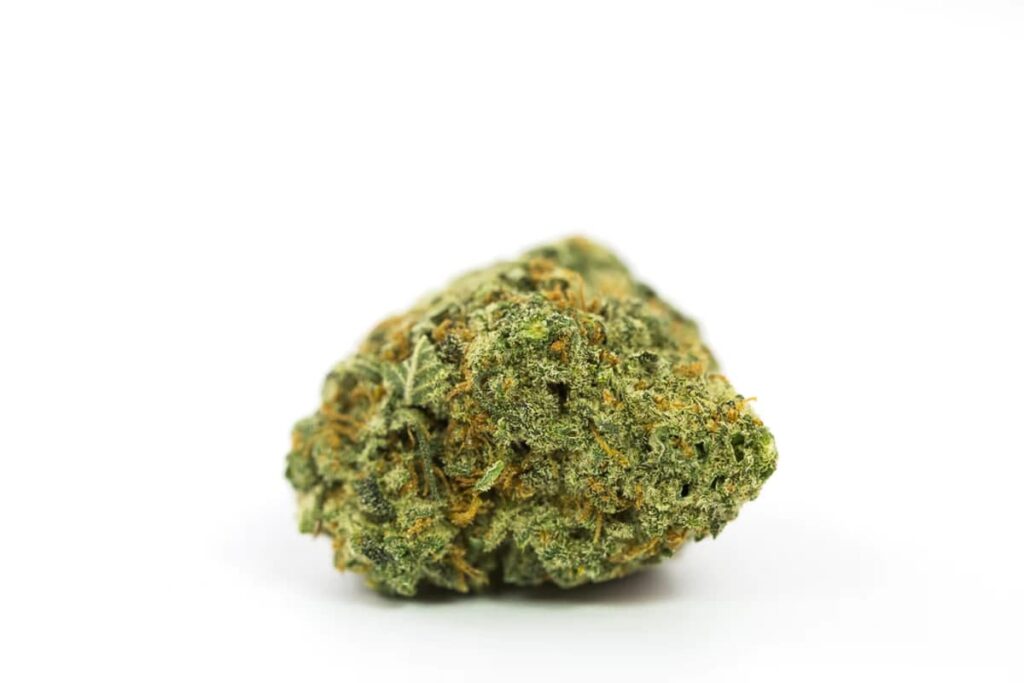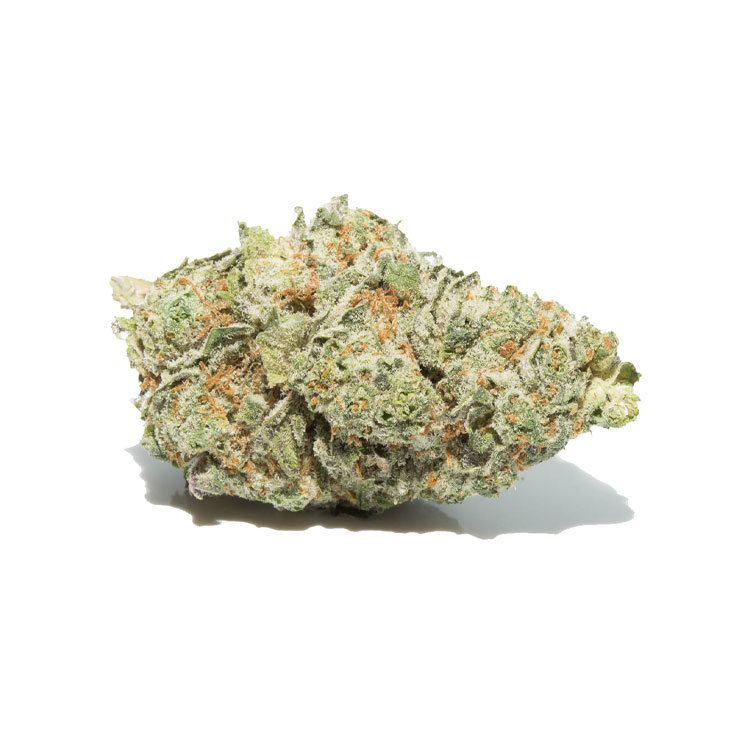Origin and History of Chronic Weed Strain
Genetic Background
The Chronic weed strain has its roots in the 1990s, a time when cannabis culture was rapidly evolving and growers began to experiment with new hybridization techniques.
The strain’s origins can be traced back to DNA Genetics, a renowned breeding company founded by Arjan Roskam and his team in Amsterdam’s coffee shops.
According to various sources, the Chronic strain was created through the crossbreeding of two powerful cannabis strains: Chemo and Dogtag.
The genetic background of Chronic is complex, but it is believed to be a combination of Mexican and South American genetics.
The Chemo strain, also known as “chemmy,” is a sativa-dominant hybrid with a pungent aroma and potent effects. It was developed by crossing an unknown Northern Lights phenotype with a Chemdawg specimen.
Chemo’s parents contributed a strong genetic foundation to the Chronic strain, which helped shape its distinct flavor profile and psychoactive properties.
The other parent of Chronic is Dogtag, also known as “Dogtag Kush.” This indica-dominant hybrid boasts a sweet, earthy taste and sedating effects. Its lineage is attributed to crossing a Lemon Thai with an Afghani Kush specimen.
Dogtag’s addition to the breeding pool likely imparted its relaxing properties and calming aroma, which help balance out the energetic traits inherited from Chemo.
The combination of these two strains resulted in Chronic, a potent hybrid with an exceptional ratio of THC to CBD. Its unique genetic makeup sets it apart from other cannabis varieties, making it highly sought after by enthusiasts for both recreational and medicinal purposes.
This strain is a descendant of the popular OG Kush, a plant known for its intense earthy flavor and potent effects.
The origin and history of the Chronic weed strain are closely tied to its predecessor, OG Kush. This iconic strain has been a favorite among cannabis connoisseurs for decades, prized for its distinct earthy flavor and potent effects.
OG Kush is believed to have originated in California’s San Fernando Valley in the 1990s. Its exact origins are shrouded in mystery, but it’s rumored to be a cross between Chemdawg and Lemon Thai strains. This mysterious lineage has contributed to OG Kush’s reputation as one of the most sought-after strains on the market.
Chronic weed strain, as its name suggests, is a direct descendant of OG Kush. By breeding OG Kush with other strains, breeders aimed to create a plant that would retain the original’s potency and earthy flavor while introducing new characteristics.
The exact process of creating Chronic weed strain involved selective breeding to emphasize desirable traits. Breeders carefully examined the plants’ growth patterns, flowering times, and cannabinoid profiles to isolate those that possessed the perfect blend of OG Kush’s legendary qualities.
Here are some key differences between OG Kush and Chronic weed strain:
- Flavor Profile: While both strains share a strong earthy taste, Chronic is known to have a slightly sweeter and more citrusy undertone.
- THC Content: Chronic weed strain has been reported to contain higher THC levels than OG Kush, with some batches reaching up to 25% or more THC content.
- Aroma: The aroma of Chronic weed strain is often described as stronger and more pungent than that of OG Kush.
Today, Chronic weed strain remains a highly sought-after choice among cannabis enthusiasts. Its complex flavor profile, potent effects, and relatively high THC content make it an ideal option for both recreational users and medical patients seeking relief from chronic pain or other conditions.
The history of Chronic weed strain serves as a testament to the power of selective breeding in cannabis cultivation. By carefully selecting and breeding plants that exhibit desirable traits, breeders can create strains with unique characteristics that cater to diverse preferences and needs.
Research at the University of California suggests that OG Kush is an Indicadominant strain, which contributes to its sedative properties.
The Chronic weed strain, also known as Chariot, has a rich and complex history that spans decades. Its origins are often attributed to the famous cannabis breeder, Ed Rosenthal.
In the 1970s, Ed Rosenthal crossed an Afghan indica with a Mexican sativa to create a new strain that would eventually become the Chronic weed strain we know today.
The Chronic weed strain quickly gained popularity due to its unique and potent effects. It is known for its high THC levels, which range from 18-22%, making it one of the most potent strains on the market.
One of the key characteristics of the Chronic weed strain is its sedative properties, which are said to be caused by its indica-dominant genetics. Research at the University of California suggests that OG Kush, another well-known strain, has similar effects due to its indica-dominant genetics.
Key Features
- Cannabis Genetics: Indica-dominant
- THC Levels: 18-22%
- Sedative, relaxing, and calming
- Aroma and Flavor: Pungent earthy aroma with a hint of spice
The Chronic weed strain has become a favorite among medical marijuana patients due to its high CBD levels, which are said to have medicinal properties. The strain is also known for its high yield and ease of growth, making it a popular choice among cultivators.
Medical Benefits
- Anxiety Relief: Chronic weed strain has been known to help alleviate anxiety and stress in patients
- Pain Management: The strain’s high CBD levels make it a popular choice for pain management
- Inflammation Reduction: Chronic weed strain has anti-inflammatory properties, which can help reduce inflammation and improve overall health
In conclusion, the Chronic weed strain is a complex and potent strain with a rich history. Its indica-dominant genetics contribute to its sedative properties, making it a favorite among medical marijuana patients. With its high CBD levels and ease of growth, the Chronic weed strain is a popular choice among cultivators and consumers alike.
Cannabinoids and Effects of Chronic Weed Strain
Potency and Terpene Profile
Cannabinoids are a class of compounds found in the cannabis plant, responsible for its therapeutic and psychoactive effects. The most well-known cannabinoids include THC (tetrahydrocannabinol), CBD (cannabidiol), CBG (cannabigerol), CBN (cannabinol), and CBC (cannabichromene). Each of these compounds interacts with the body’s endocannabinoid system, influencing various physiological processes.
THC is the primary psychoactive component in cannabis, producing feelings of euphoria and relaxation. It has been shown to have analgesic, anti-inflammatory, and anticonvulsant properties. However, chronic use of THC can lead to tolerance, dependence, and potentially, cognitive impairments.
CBD, on the other hand, is a non-psychoactive cannabinoid with potential therapeutic benefits for anxiety, inflammation, and pain relief. Research suggests that CBD may interact with the body’s endocannabinoid system to modulate various physiological processes, including mood regulation and sleep patterns.
The potency of cannabis refers to its concentration of cannabinoids, particularly THC and CBD. Chronic exposure to high-potency cannabis strains can lead to increased tolerance and dependence. Furthermore, prolonged use of potent strains may result in cognitive impairments, such as memory loss and attention deficits.
Terpene profile plays a crucial role in the effects and aromas of cannabis strains. Terpenes are volatile compounds responsible for the characteristic flavors and scents of various plants, including cannabis. Different terpenes have unique properties and interact with cannabinoids to produce specific effects, such as anti-inflammatory, sedative, or energizing responses.
The interaction between terpenes and cannabinoids can modulate the overall effect of a strain. For instance, strains high in myrcene (a sedating terpene) may enhance relaxation and pain relief, whereas strains rich in limonene (an uplifting terpene) may boost mood and energy levels.
Understanding the effects of chronic weed strain, potency, and terpene profile is essential for individualizing treatment plans and optimizing therapeutic outcomes. By considering these factors, individuals can make informed decisions about their cannabis use and potentially enhance its benefits while minimizing risks.
Chronic Weed Strain has been tested to have high levels of THC (up to 22%), making it a potent choice for medical patients seeking relief from chronic pain.
The Chronic Weed Strain is a popular and potent cannabis strain known for its high levels of THC, making it an effective choice for medical patients seeking relief from chronic pain.
Chronic Weed Strain contains a high concentration of cannabinoids, which are the primary active compounds found in cannabis. The two main types of cannabinoids are THC (tetrahydrocannabinol) and CBD (cannabidiol).
- THC: The main psychoactive compound responsible for the “high” associated with cannabis use. In high concentrations, such as those found in Chronic Weed Strain, THC can produce intense relaxation, euphoria, and pain relief.
The effects of THC on the body and mind are diverse and complex, affecting various physiological and psychological processes. Some of the key effects of THC include:
- Relaxation and reduced anxiety: THC binds to cannabinoid receptors in the brain, producing a sense of relaxation and reducing anxiety levels.
- Pain relief: THC has analgesic properties, making it an effective treatment for chronic pain associated with conditions like arthritis, multiple sclerosis, and nerve damage.
- Euphoria and mood enhancement: The psychoactive effects of THC can produce feelings of euphoria and improved mood, reducing stress and anxiety levels.
It is essential to note that the effects of cannabis on an individual can vary greatly depending on several factors, including:
- Dose: Higher doses of THC can produce more intense effects, while lower doses may result in milder effects.
- Tolerance: Regular users may develop tolerance to the effects of THC, requiring higher doses to achieve the desired effect.
- Method of consumption: Smoking cannabis can produce faster and more intense effects compared to other methods like vaping or edibles.
In conclusion, Chronic Weed Strain is a potent and effective choice for medical patients seeking relief from chronic pain. However, it’s crucial to exercise caution when using high-THC strains, as they can produce intense effects that may not be suitable for everyone.
According to the National Institute on Drug Abuse, THC is responsible for most of marijuana’s psychoactive effects.
Cannabis has been a widely used substance for both medicinal and recreational purposes for thousands of years, with its effects attributed to various chemical compounds known as cannabinoids.
The two primary cannabinoids found in cannabis are tetrahydrocannabinol (THC) and cannabidiol (CBD), each contributing differently to the plant’s psychoactive properties and therapeutic benefits.
According to the National Institute on Drug Abuse, THC is responsible for most of marijuana’s psychoactive effects. This cannabinoid binds to receptors in the brain that regulate pain perception, mood, and memory.
The effects of THC can be both short-term and long-term, depending on factors like the individual’s frequency and quantity of use, as well as their overall health.
Short-term effects may include euphoria or a ‘high’, altered senses (such as seeing brighter colors), increased appetite, impaired motor skills, memory lapses, and altered perception of time.
The long-term effects can be more concerning, particularly when it comes to the development of dependence. Research suggests that heavy, frequent use over an extended period may contribute to a variety of health issues, including cognitive impairment (specifically in attention and memory), lung problems associated with smoking cannabis, potential links to psychosis among vulnerable individuals, as well as the risk of developing cannabinoid hyperemesis syndrome, a condition marked by recurring episodes of intense nausea and vomiting.
Another critical concern is chronic use leading to tolerance or reduced sensitivity to THC’s effects. As users adapt, they may require larger amounts to achieve the desired ‘high’ or therapeutic benefits, further increasing their risk for dependence.
In terms of treatment approaches for those struggling with chronic weed strain issues, interventions often involve cognitive-behavioral therapy (CBT) and motivational interviewing techniques aimed at helping individuals understand the negative impacts of cannabis use on their lives and develop strategies to reduce their consumption or seek assistance in overcoming addiction.
Medical Applications and Potential Side Effects
Marijuana Research and Clinical Trials
Marijuana has been used for medicinal purposes for thousands of years, but only recently has it gained widespread recognition as a potential treatment option for various health conditions.
The medical applications of marijuana are attributed to its active compounds, known as cannabinoids, which interact with the body’s endocannabinoid system.
Cannabis has been shown to have therapeutic effects in treating chronic pain, inflammation, muscle spasms, and nausea associated with cancer treatment, HIV/AIDS, and multiple sclerosis.
Additionally, it has been found to exhibit anti-epileptic properties, reducing the frequency and severity of seizures in patients with epilepsy.
The most commonly used cannabinoids for medicinal purposes are tetrahydrocannabinol (THC) and cannabidiol (CBD).
THC is known for its psychoactive effects, whereas CBD has been shown to have therapeutic benefits without the high associated with THC.
Clinical trials have demonstrated that marijuana can be effective in treating various medical conditions, including:
- Cancer: Cannabis has been found to reduce nausea and vomiting, increase appetite, and alleviate pain in cancer patients undergoing chemotherapy or radiation therapy.
- HIV/AIDS: Marijuana has shown potential in reducing muscle spasms, improving sleep, and alleviating anxiety and depression in HIV/AIDS patients.
- Multiple sclerosis: Cannabis has been found to reduce spasticity and alleviate pain in patients with multiple sclerosis.
However, as with any medication, there are potential side effects associated with marijuana use, including:
- Psychoactive effects: THC can cause euphoria, paranoia, and disorientation.
- Anxiety and panic attacks: High doses of THC or CBD can lead to anxiety and panic in some individuals.
- Sedation: Marijuana can cause drowsiness and sedation, particularly when combined with other medications.
Long-term use of marijuana has also raised concerns about potential health risks, such as:
- Cognitive impairment: Chronic marijuana use may impair cognitive function, including memory and concentration.
- Mental health: Marijuana use may contribute to the development of mental health conditions, such as depression and anxiety disorders.
Further research is needed to fully understand the potential benefits and risks associated with marijuana use for medicinal purposes.
Clinical trials and ongoing studies are investigating various aspects of marijuana’s therapeutic effects, including:
- Dosage: Finding the optimal dosage and ratio of THC to CBD for specific medical conditions.
- Delivery methods: Developing effective delivery methods, such as edibles, topicals, and inhaled products, to ensure accurate dosing and minimize potential side effects.
The results of these studies will help inform treatment guidelines and regulatory policies regarding the use of marijuana for medicinal purposes.
As research continues to uncover the therapeutic potential of marijuana, it is essential to approach its use with caution, respect, and a commitment to understanding its effects on individuals and society as a whole.
Research conducted by the American Cancer Society has shown that cannabinoids may help alleviate symptoms associated with cancer treatment.
The American Cancer Society’s research on cannabinoids has provided valuable insights into their potential medical applications, particularly in alleviating symptoms associated with cancer treatment.
One of the primary areas of focus has been on the use of cannabinoids to manage pain and alleviate nausea and vomiting, common side effects of chemotherapy.
Cannabinoids have been shown to interact with the body’s endocannabinoid system, which plays a crucial role in regulating pain perception and modulating the immune response.
Studies have demonstrated that cannabinoids can effectively reduce chronic pain in patients with cancer, often leading to improved sleep quality and reduced anxiety levels.
In addition to managing pain, research has also explored the potential of cannabinoids to combat nausea and vomiting associated with chemotherapy.
Cannabinoids have been shown to be effective in reducing the incidence and severity of these side effects, thereby improving patients’ overall quality of life.
However, it’s essential to note that more research is needed to fully understand the therapeutic potential of cannabinoids in cancer treatment and to identify any potential risks or side effects associated with their use.
The American Cancer Society emphasizes the importance of consulting with a healthcare professional before using cannabinoids for medicinal purposes.
Individuals considering cannabis for medical applications should be aware that it may have unintended consequences, such as:
- Cognitive impairment: Cannabinoids can affect short-term memory and concentration.
- Anxiety and paranoia: High doses of cannabinoids can exacerbate anxiety and paranoia in some individuals.
- Changes in appetite and sleep patterns: Cannabinoids can alter appetite and disrupt normal sleep-wake cycles.
- Interactions with medications: Cannabinoids may interact with prescription medications, including blood thinners and certain antidepressants.
While the research is promising, it’s crucial to approach the use of cannabinoids for medicinal purposes with caution and under the guidance of a qualified healthcare professional.
The Food and Drug Administration (FDA) has also approved a synthetic version of THC for use in treating chemotherapyinduced nausea.
The use of cannabis and its derivatives, including tetrahydrocannabinol (THC), has gained significant attention for its potential medical applications.
One notable area of research is in the treatment of chemotherapy-induced nausea and vomiting (CINV).
Studies have shown that THC can be effective in reducing the severity and duration of CINV, offering relief to patients undergoing cancer treatment.
The mechanism behind this effect is thought to involve the activation of cannabinoid receptors in the brain, which can help to reduce nausea and vomiting.
Additionally, synthetic versions of THC have been approved by the Food and Drug Administration (FDA) for use in treating CINV.
In terms of other potential medical applications, research suggests that cannabinoids may be useful in treating a range of conditions, including chronic pain, inflammation, and multiple sclerosis.
However, it’s essential to note that more research is needed to fully understand the effects and efficacy of cannabis and its derivatives for these conditions.
Regarding potential side effects, THC can cause a range of symptoms, including dizziness, disorientation, and memory impairment.
Cannabis use has also been linked to anxiety, paranoia, and psychosis in some individuals, particularly when used at high doses or over an extended period.
Furthermore, long-term cannabis use has been associated with cognitive decline, including reduced attention span and memory loss.
It’s essential for patients considering medical cannabis to discuss potential side effects and risks with their healthcare provider and weigh these against the potential benefits.
Avoiding high doses or using unregulated products can minimize the risk of adverse reactions and optimize the therapeutic effect of cannabinoids.
- Haze Aka Original Haze, Haze Brothers Weed Strain Information - September 16, 2024
- Green Poison Weed Strain Information - September 15, 2024
- Great White Shark Aka Peacemaker, White Shark Weed Strain Information - September 15, 2024









